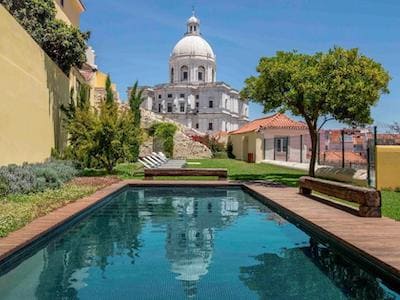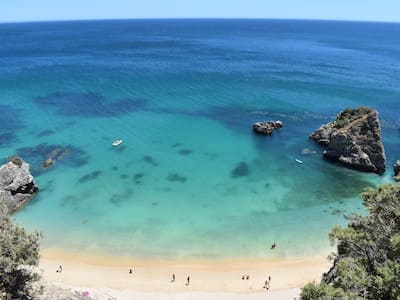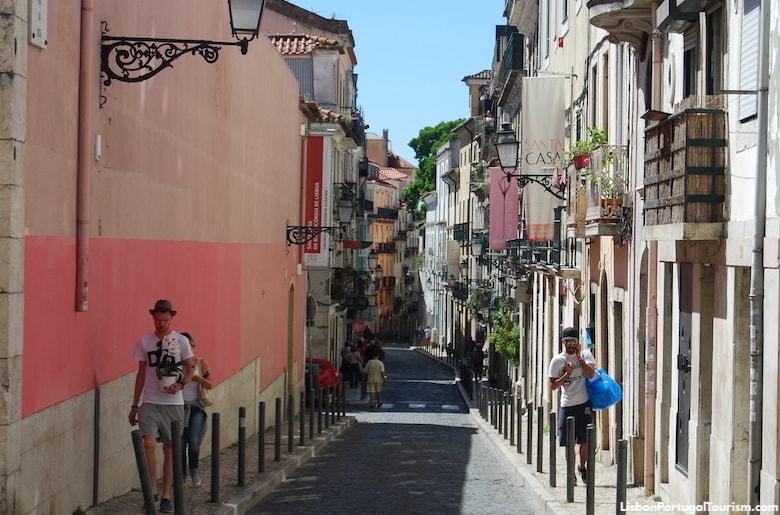
Bairro Alto, the "upper neighborhood"
Literally “upper neighborhood,” Bairro Alto sits at the top of a hill, and is the most “recent” of Lisbon’s old quarters. Laid out in 1513, it was the city’s first planned district, with a small grid of narrow streets outside the medieval wall that stood where you now see the two churches in Praça Luís de Camões. It was the neighborhood of merchants and aristocrats, but by the late 1800s it was home to several newspaper offices -- two streets are even named after periodicals (Rua do Diário de Notícias and Rua de O Século). Then came the bars to serve the journalists who left work late at night, and those were followed by brothels. Soon Bairro Alto became synonymous with a bohemian lifestyle, and by the 1980s it was where everyone went to in the late hours, creating street parties every Friday and Saturday night. Those continue to this day, although many of the night owls have moved down to the waterfront, in Cais do Sodré. It still has a variety of restaurants and bars, and although it no longer mixes different urban tribes, you still see people of all ages, straight and gay, bar-hopping and drinking on the streets.
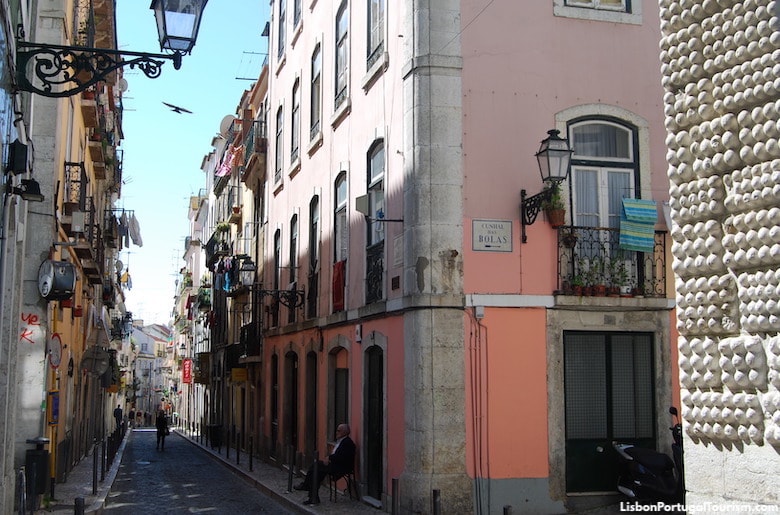
Rua da Rosa in Bairro Alto
During the day it’s a sleepy place, with not much open except for a few shops on Rua do Norte. Everyone is hungover and preparing to open their doors after the sun sets. You’ll see a few older residents hanging laundry on their balconies, plus a few young hipsters, but not many tourists -- those only show up for dinner or a show at the several fado restaurants later in the evening.
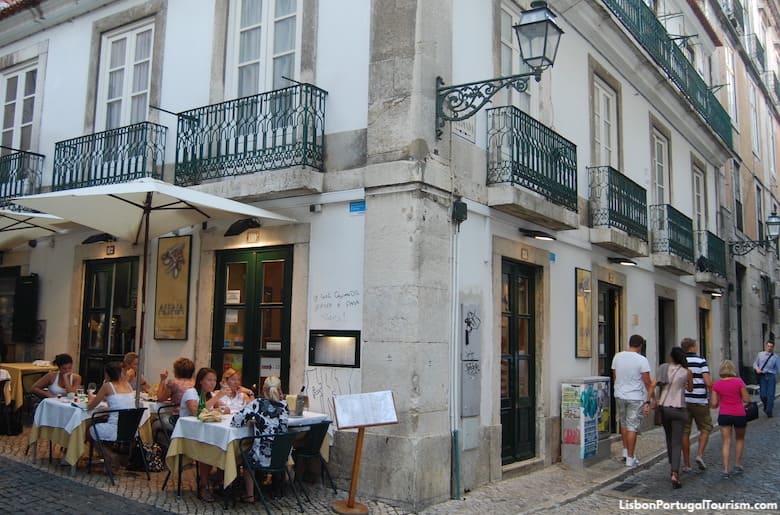
Bairro Alto remains one of the most popular places to dine out in Lisbon
Bounded by Rua de O Século (or “Rua do Século,” as it’s often written) to the west, Rua da Misericórdia to the east, Rua de São Pedro de Alcântara to the north, and Rua do Loreto and Calçada do Combro to the south, it’s mainly a residential area, with few tourist attractions. However, it does have the city’s two richest churches -- Igreja de São Roque and Igreja de Santa Catarina, and arguably the most romantic viewpoint, Miradouro de São Pedro de Alcântara (details below). Crossing Calçada do Combro you step into another picturesque neighborhood, tiny Bica, which goes down the hill, as does its much-photographed funicular. A short walk from there is Santa Catarina, known for its viewpoint.
What to See and Do in Bairro Alto
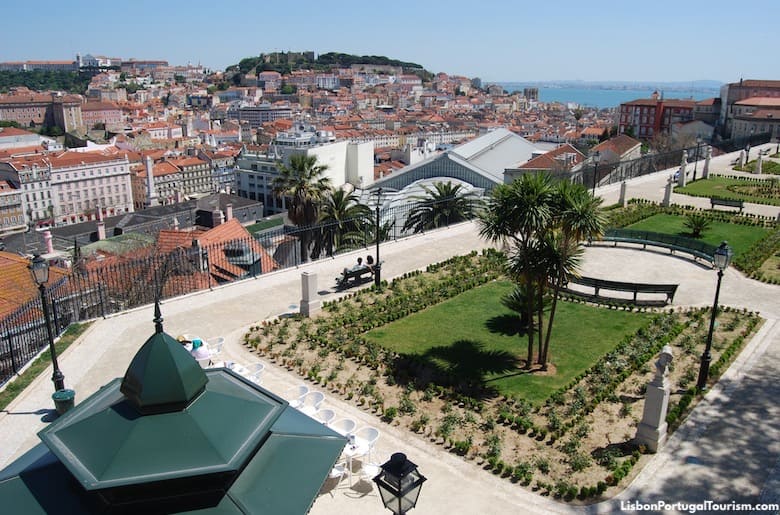
It’s one of Lisbon’s must-see viewpoints and one of the most romantic. It faces the castle, and its two landscaped terraces dotted with sculptures are where everyone stops to relax with a drink (there are two kiosks serving refreshments). A tile panel illustrates the landmarks than can be seen from here.
See the São Pedro de Alcântara Viewpoint Visitor's Guide.
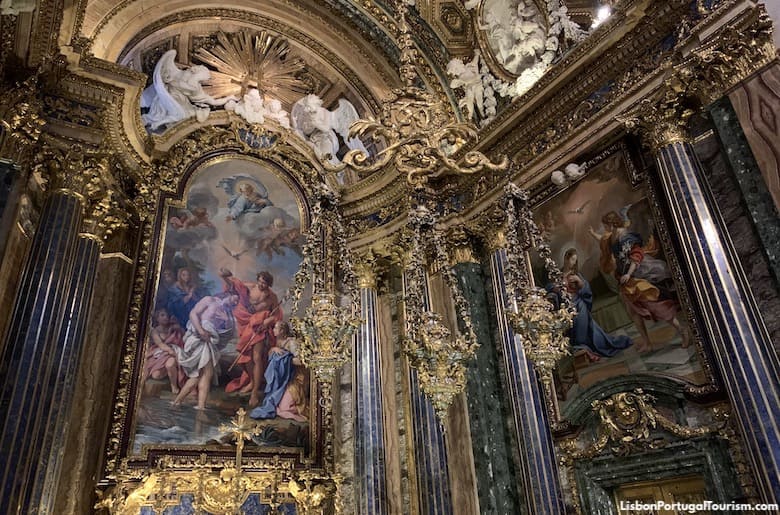
It’s worth stepping into this church with a plain façade for the artistic richness inside. It includes “the world’s most expensive chapel” and a masterpiece tile painting from the 16th century.
See the Igreja de São Roque Visitor's Guide.
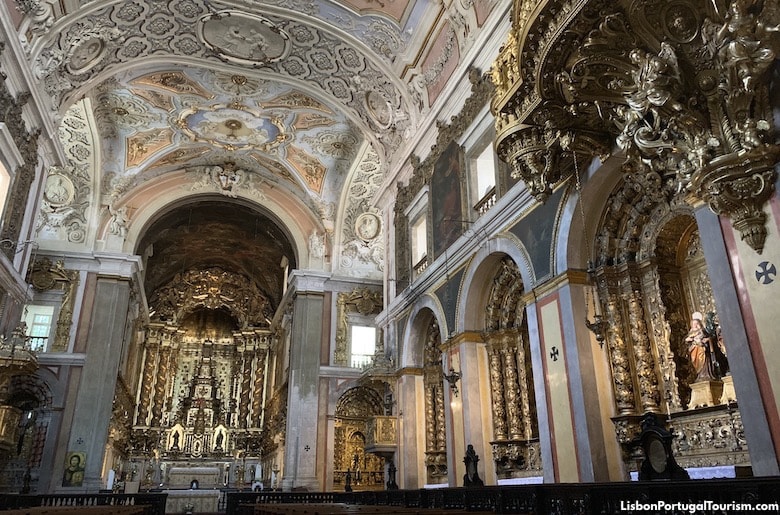
Gilding from 1727 fills much of this church dedicated to St. Catherine. The main altar is considered the most magnificent example of gilded art in Lisbon, and the rococo-style stucco decoration of the ceiling is one of the most outstanding of its kind in Europe. Yet, for whatever reason, it remains a secret visited by very few, despite its location on the edge of Bairro Alto.
See the Igreja de Santa Catarina Visitor's Guide.
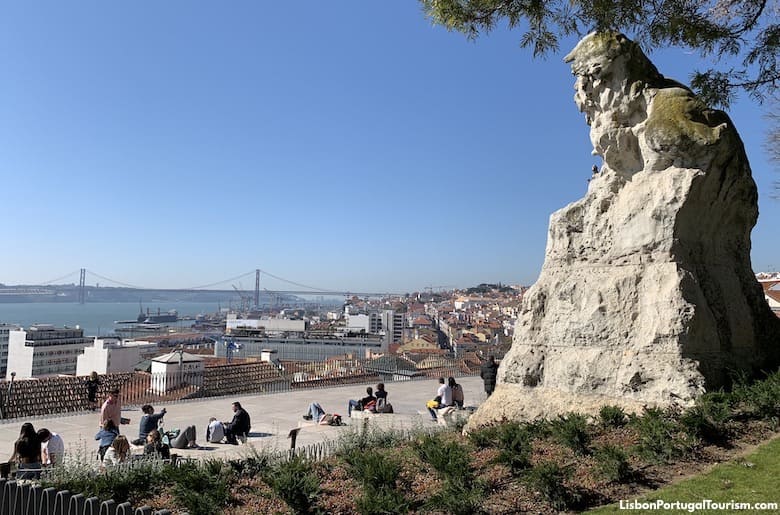
One of Lisbon’s favorite viewpoints, this terrace facing the port is where young locals and tourists get together for sunset views. It has a chill-out atmosphere, as everyone sits for drinks on the amphitheater-like steps or by the kiosk-café.
See the Santa Catarina Viewpoint Visitor's Guide.
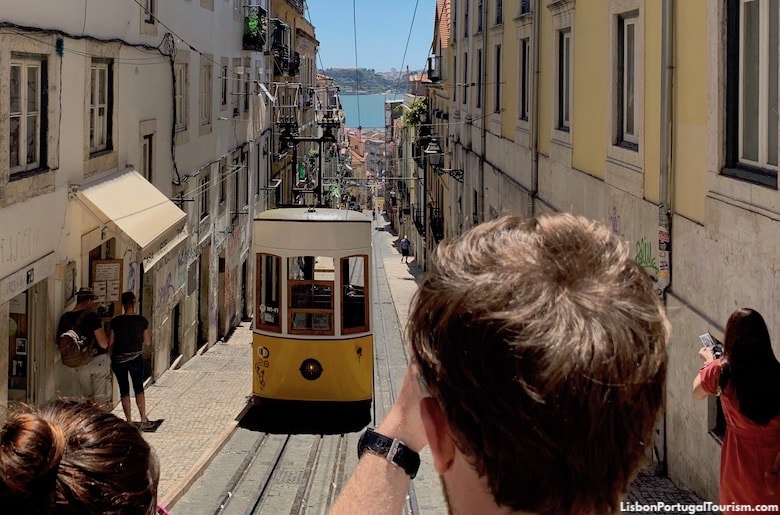
Lisbon’s most photographed street is Rua da Bica de Duarte Belo. It’s quite a hilly street, so it was given a funicular in 1892, to facilitate the climb between the waterfront and Bairro Alto. Today it’s mostly used by tourists, who fill its 23-passenger capacity. No one can resist photographing it at the top of the hill, especially when the picturesque street frames a view of the river. It departs every 15 minutes until 9pm, when the street becomes one of the epicenters of Lisbon’s nightlife.
See the Bica Funicular Guide.
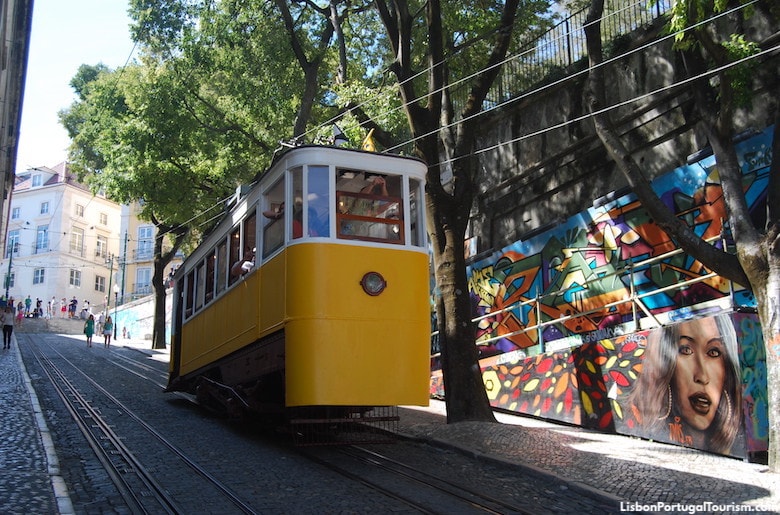
This funicular from 1885 is used by tourists and locals to go up the hill from Restauradores Square downtown to Bairro Alto. On the Bairro Alto side of its trajectory there’s a street art gallery, with seven panels offered by the City Council. Inaugurated in 2008, the outdoor gallery invites artists to legally show their art, and exhibits change regularly. Unfortunately, spray paint often ends up on the funicular, which is almost always covered in graffiti, and very rarely seen in just its yellow paint.
See the Glória Funicular Guide.
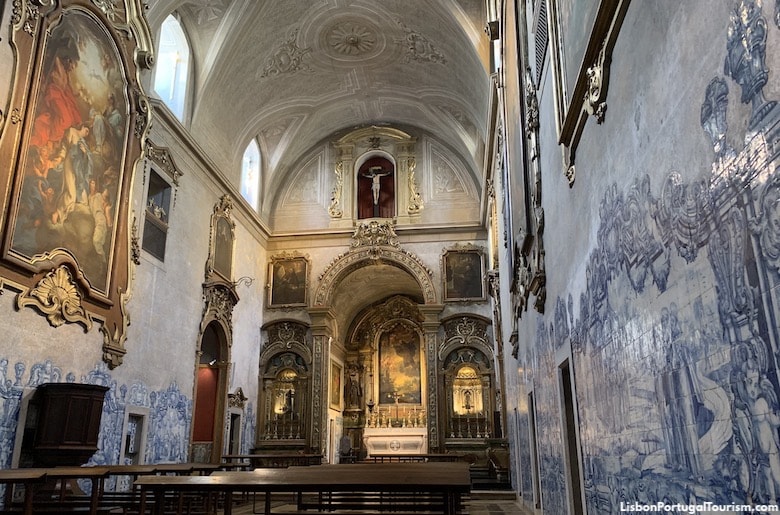
Throughout its history (which dates back to 1670), this convent had been closed to the public, until 2014, when the last nuns moved out. It faces the viewpoint of the same name (see above), and has an exceptional marble chapel next to a gilded church with baroque tile panels illustrating the life of St. Peter of Alcantara.
See the Convento de São Pedro de Alcântara Visitor's Guide.
How to Get to Bairro Alto
The upper section of Bairro Alto can be reached from downtown by the Glória funicular, which departs from Restauradores Square. The lower part, by Praça Luís de Camões, is a short walk from the Baixa-Chiado metro station on the blue and green lines (exit to “Largo do Chiado,” up the steep escalators). Tram 28 also makes a couple of stops in the neighborhood, and those coming from the waterfront may also take the Bica funicular up the hill.
You may ride the funiculars, metro, trams, buses and trains for free with the Lisboa Card.
Where to Stay in Bairro Alto
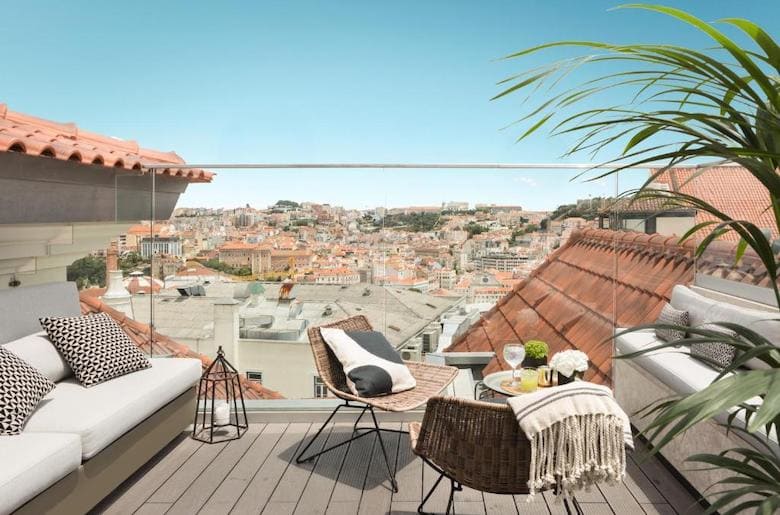
Bairro Alto may be a nightlife district but, thankfully, its hotels are outside the noisiest streets. In Camões Square, facing the neighborhood’s grid of streets, is Lisbon’s most distinguished boutique hotel, the Bairro Alto Hotel. Facing the neighborhood’s famous viewpoint São Pedro de Alcântara is the Lumiares Hotel, while by the Santa Catarina viewpoint is the Verride Palácio Santa Catarina. The grandest of them all is the Palácio Ludovice Wine Experience Hotel, right across from the Glória Funicular.
For more details and recommendations, see the best hotels in Bairro Alto.

